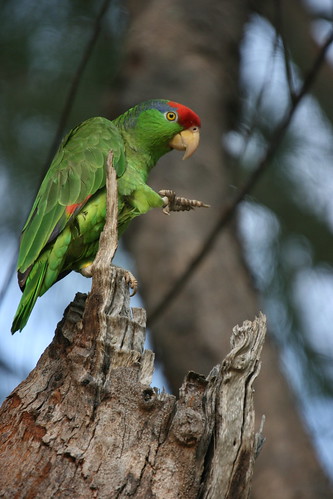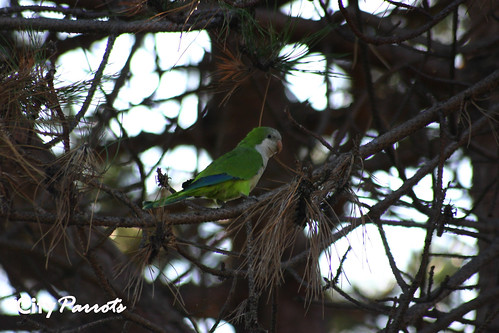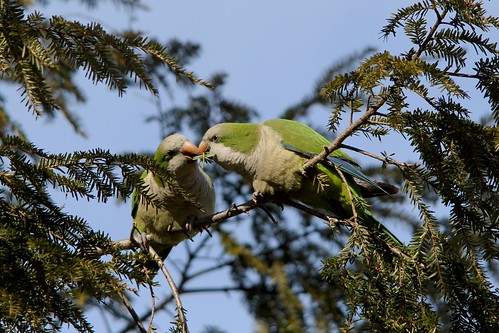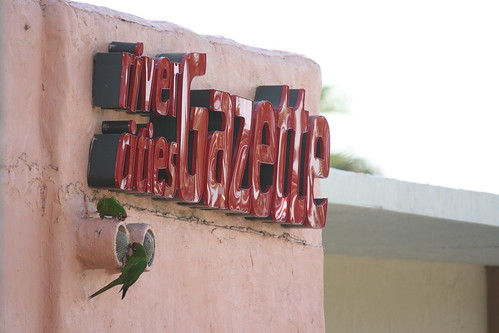 Red-crowned amazon in Palm Beach FLFrom San Francisco to South Florida, populations of nonnative parrots—some imperiled in their tropical homelands—are thriving in U.S. cities and suburbs
Red-crowned amazon in Palm Beach FLFrom San Francisco to South Florida, populations of nonnative parrots—some imperiled in their tropical homelands—are thriving in U.S. cities and suburbs
ON A STEAMY spring morning, Joe Barros and Paul Bithorn of the Tropical Audubon Society were driving around Miami with their windows down, listening for telltale squawks. Winding through golf courses, residential streets and downtown parks, the expert birders were searching for parrots, and they found them all over the city: yellow-chevroned parakeets crowding a backyard feeder, mitred parakeets preening in a melaleuca tree, a colorful flock of Amazons—lilac-crowned, yellow-headed and orange-winged parrots—on power lines, even a pair of blue-and-yellow macaws that flew into a nest in a dead royal palm. In all, Barros and Bithorn spotted 16 species of parrots before sundown, a number that would be difficult for a birder to top anywhere on the planet.
Click to read more ...
 Saturday, December 4, 2010 at 8:47
Saturday, December 4, 2010 at 8:47  Myiopsitta monachus - Monk Parakeet | in
Myiopsitta monachus - Monk Parakeet | in  Cull,
Cull,  Legislation,
Legislation,  Urban parrots
Urban parrots 




